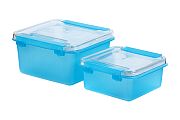
THURSDAY, July 9, 2015 (HealthDay News) — Two supposedly safer chemicals used to replace a known harmful one in plastic and other consumer products pose similar health risks, a new study contends.
The compounds di-isononyl phthalate (DINP) and di-isodecyl phthalate (DIDP) — which belong to a class of chemicals known as phthalates — are associated with increased risk of high blood pressure and diabetes in children and teens, researchers from NYU Langone Medical Center in New York City found.
The two chemicals are used during manufacturing to strengthen plastic wrap, soap, cosmetics and containers for processed foods. They are replacements for another chemical — di-2-ethylhexylphlatate (DEHP) — which was previously found to have similar harmful effects on human health, the researchers said.
“Our research adds to growing concerns that environmental chemicals might be independent contributors to insulin resistance, elevated blood pressure and other metabolic disorders,” lead investigator Dr. Leonardo Trasande said in a medical center news release.
In a study published online July 9 in the journal Hypertension, the researchers said that for every 10-fold increase in the amount of DINP or DIDP consumed, there was a 1.1 millimeters of mercury (mm Hg) increase in blood pressure.
And in a study published in May in the Journal of Clinical Endocrinology & Metabolism, the researchers said they discovered a link between DINP and DIDP concentrations and increased insulin resistance, a precursor to diabetes.
The investigators said that one in three teens with the highest DINP levels had the highest insulin resistance, while for those with the lowest concentrations of the chemicals, only one in four had insulin resistance.
European regulators banned DEHP in 2004, and manufacturers in the United States began to replace DEHP with DINP and DIDP over the last decade, the study authors said.
“Alternatives to DIDP and DINP include wax paper and aluminum wrap; indeed, a dietary intervention that introduced fresh foods that were not canned or packaged in plastic reduced phthalate metabolites substantially,” Trasande said.
“Our study adds further concern for the need to test chemicals for toxicity prior to their broad and widespread use, which is not required under current federal law,” he added.
There are a number of “safe and simple” ways you can limit exposure to phthalates, Trasande said. Don’t microwave food in plastic containers or covered by plastic wrap. Wash plastic food containers by hand instead of putting them in the dishwasher, where harsh chemicals can increase the transfer of the chemicals into food.
Another way to protect yourself is by not using plastic containers with the numbers 3, 6 or 7 on the bottom, which indicates that they contain phthalates, Trasande said.
More information
The U.S. Consumer Product Safety Commission has more about phthalates.
Copyright © 2025 HealthDay. All rights reserved.

